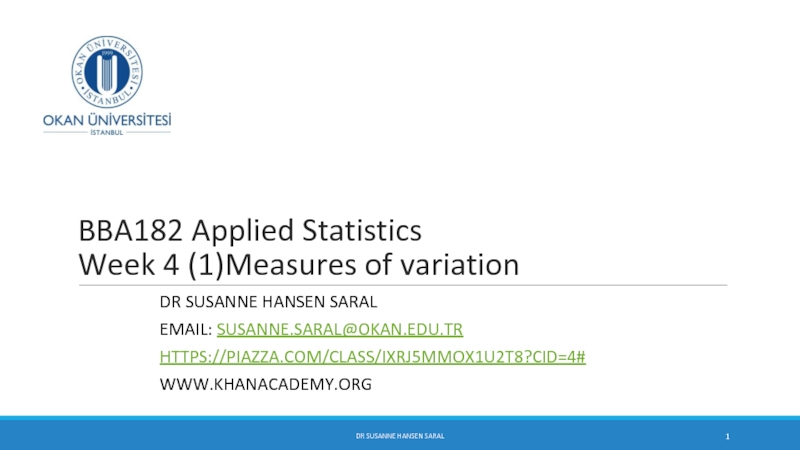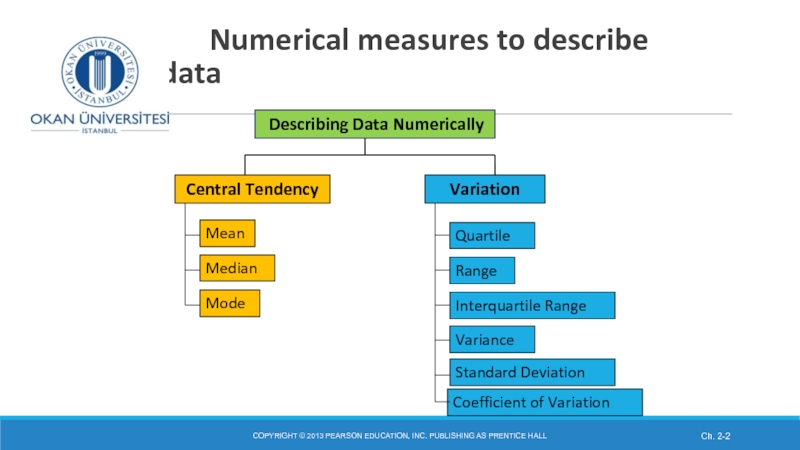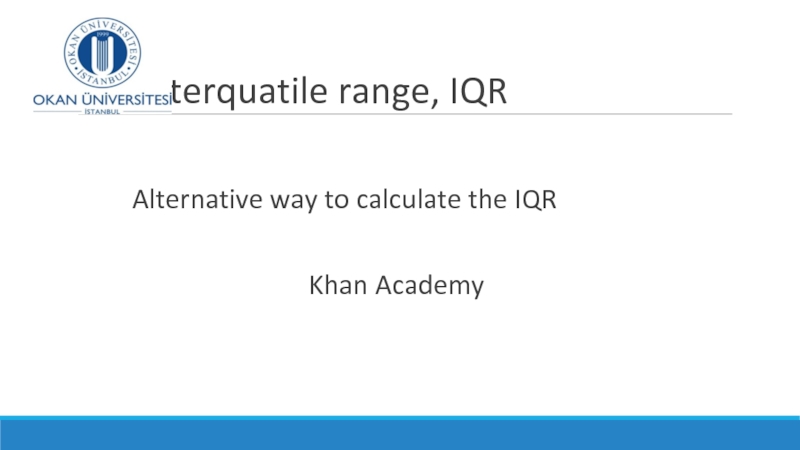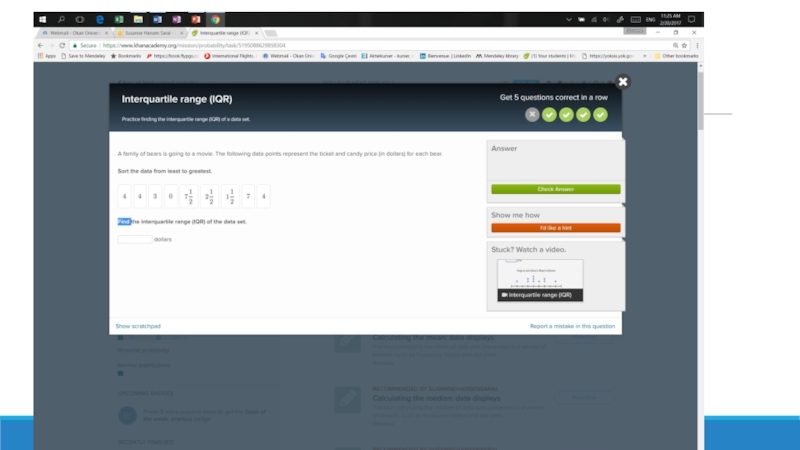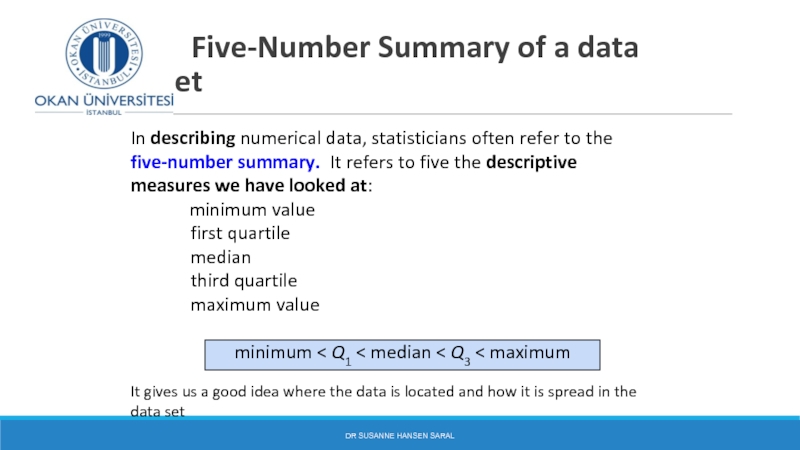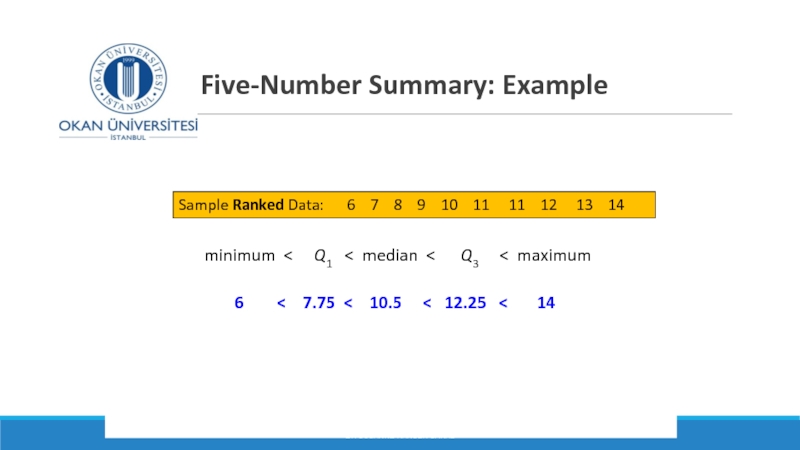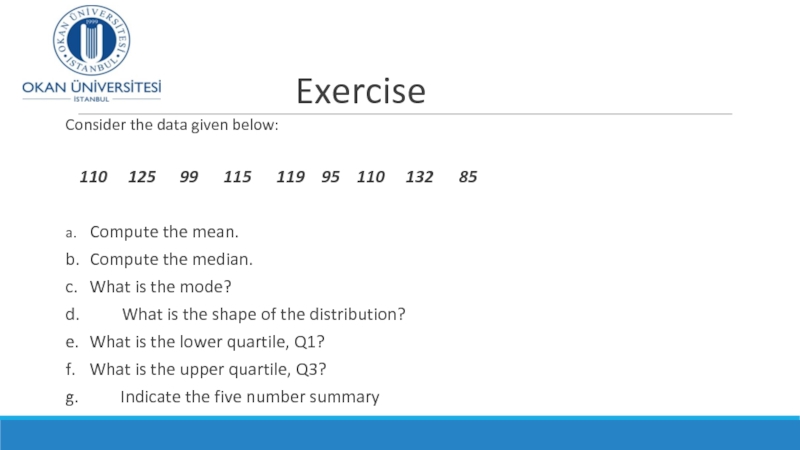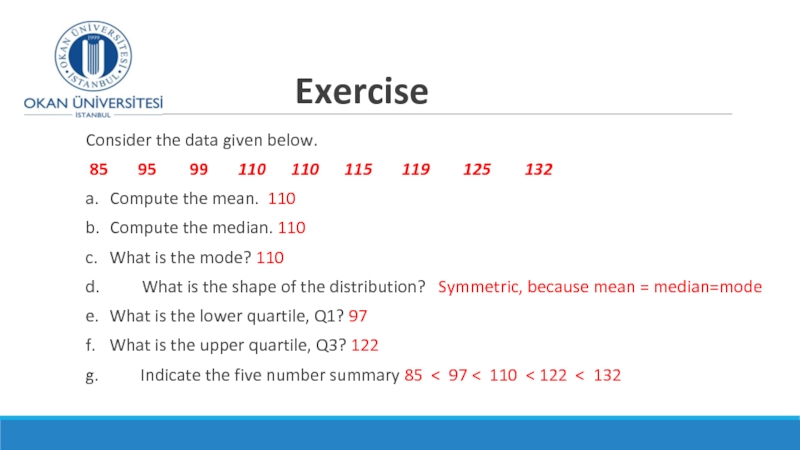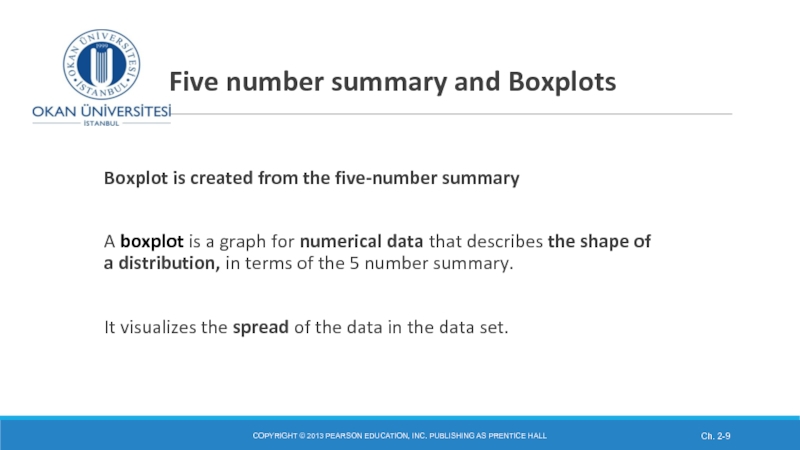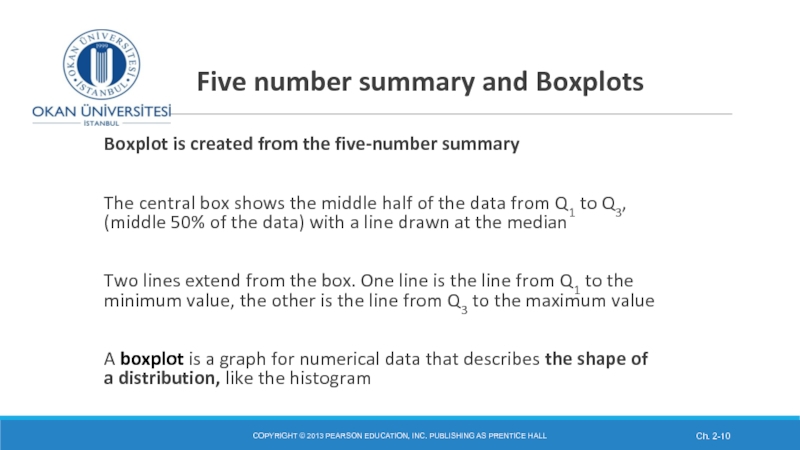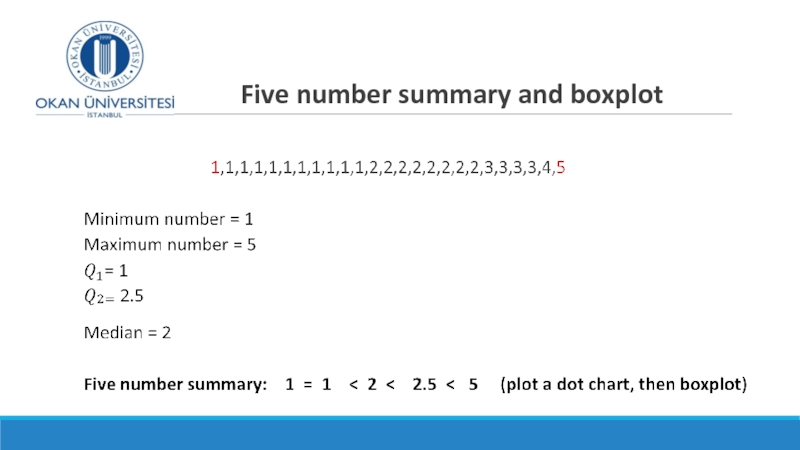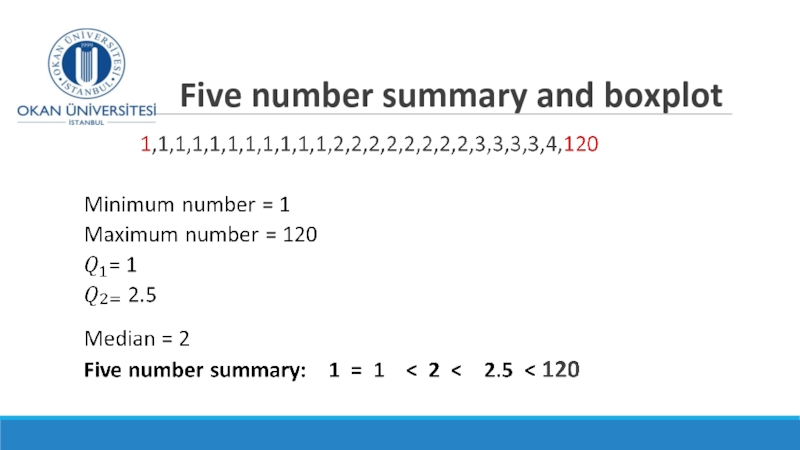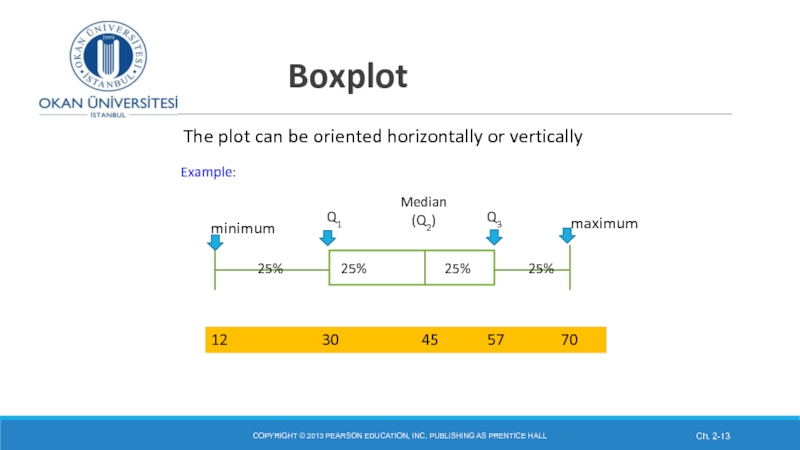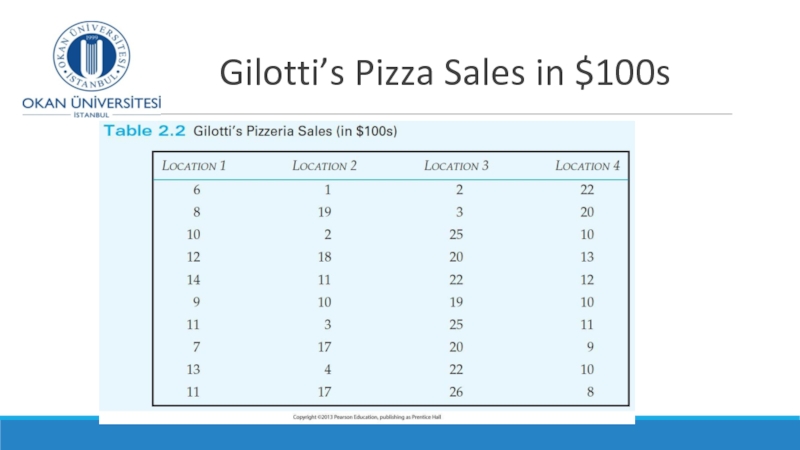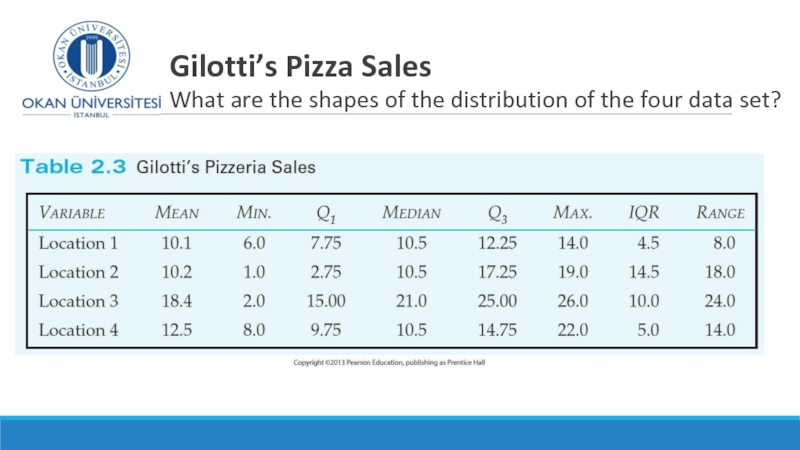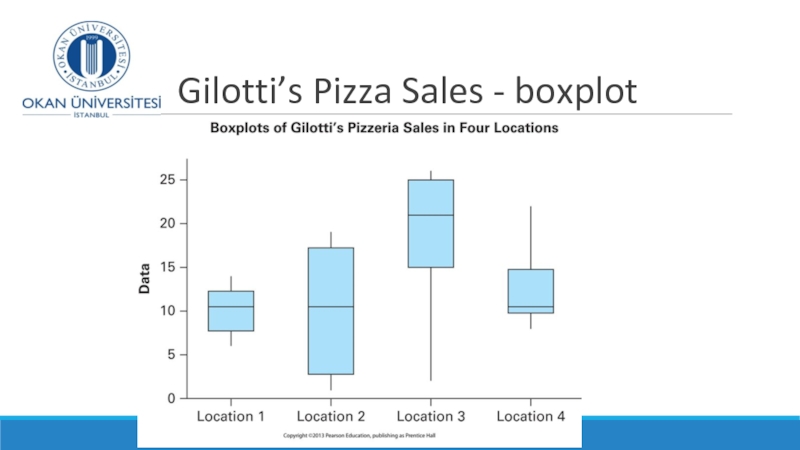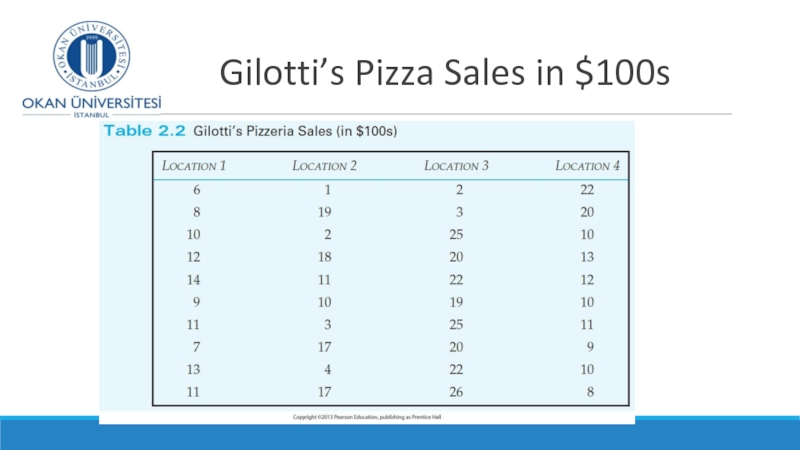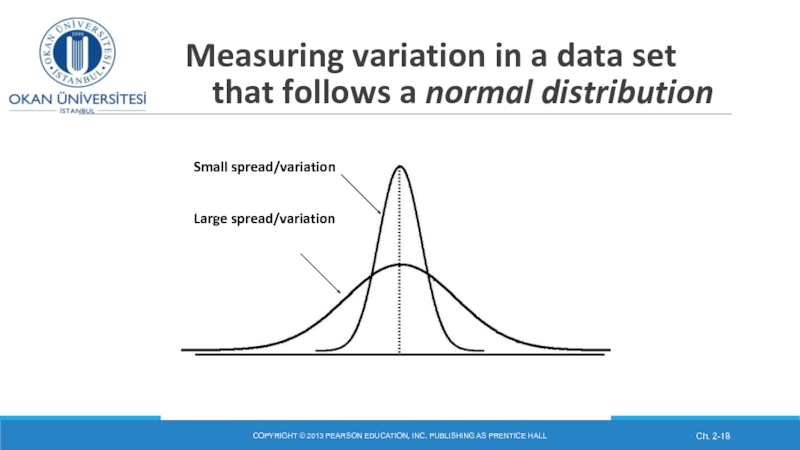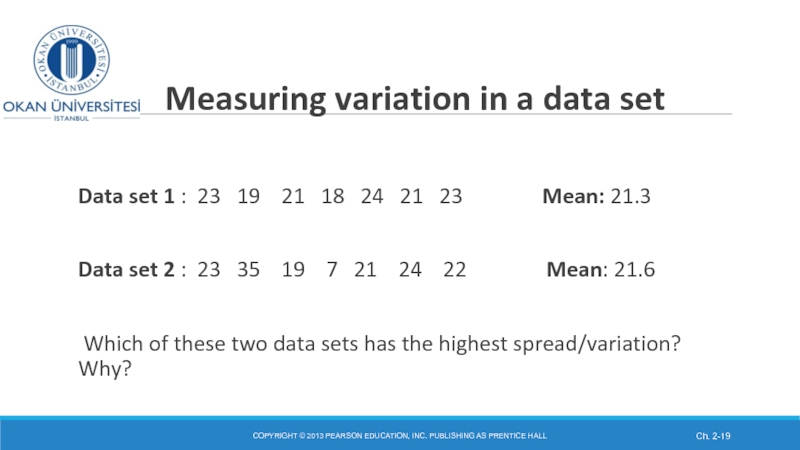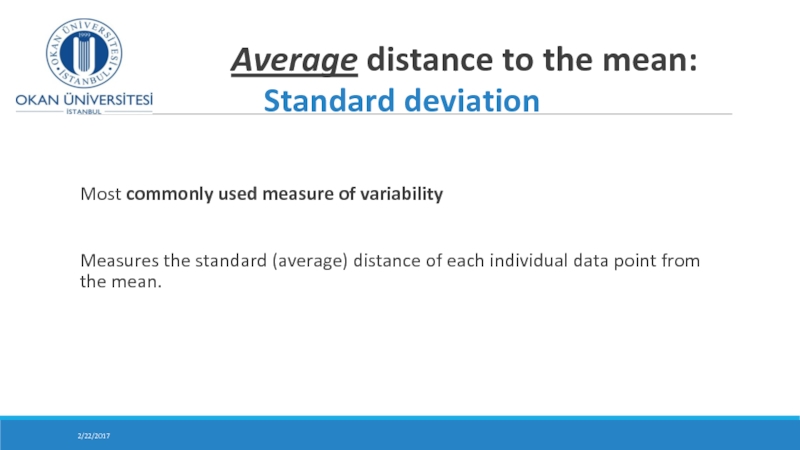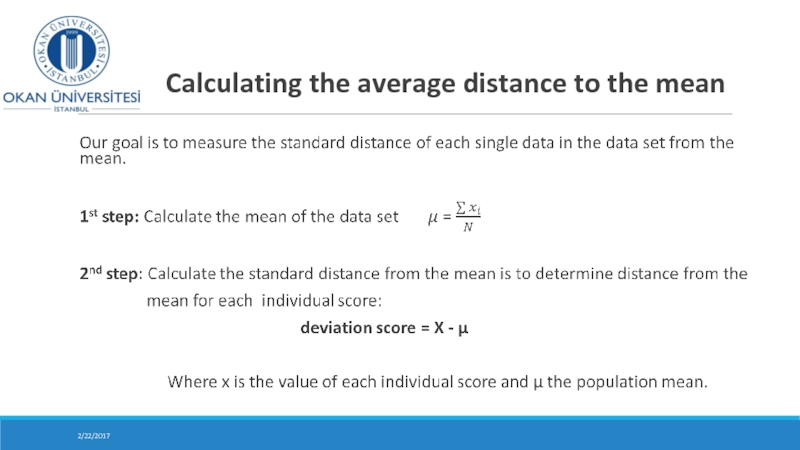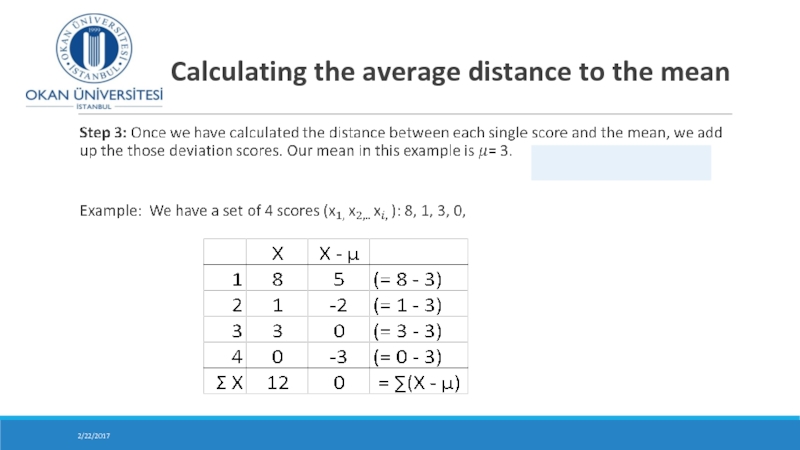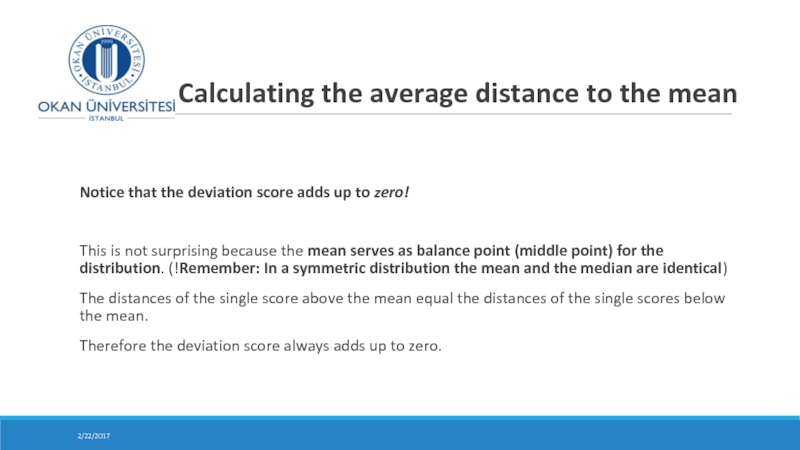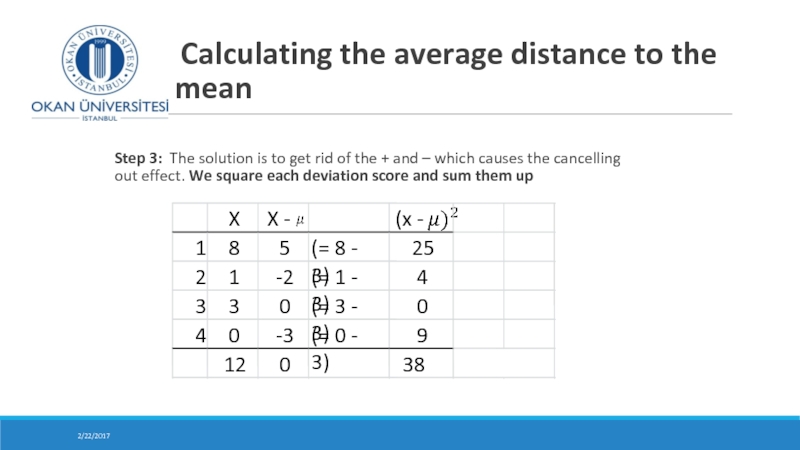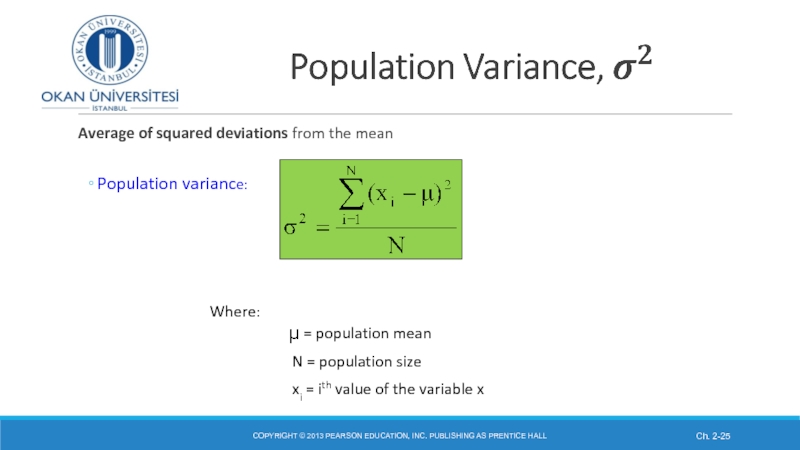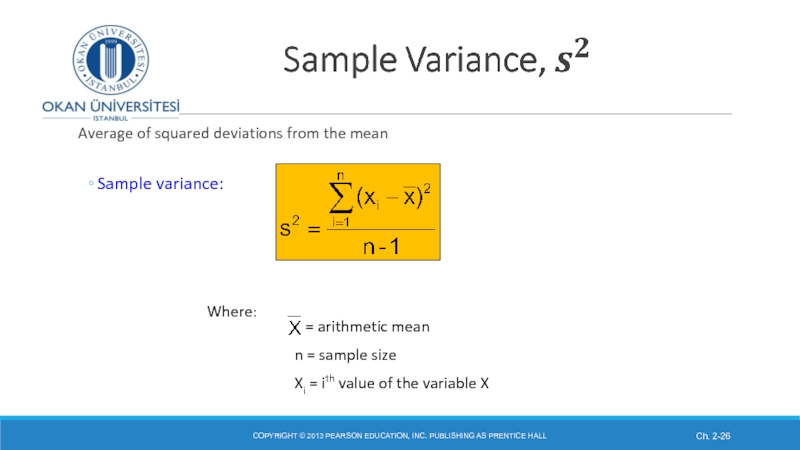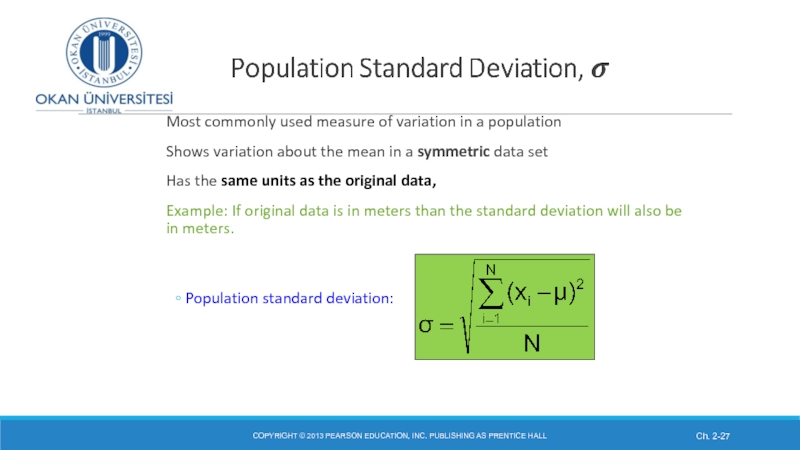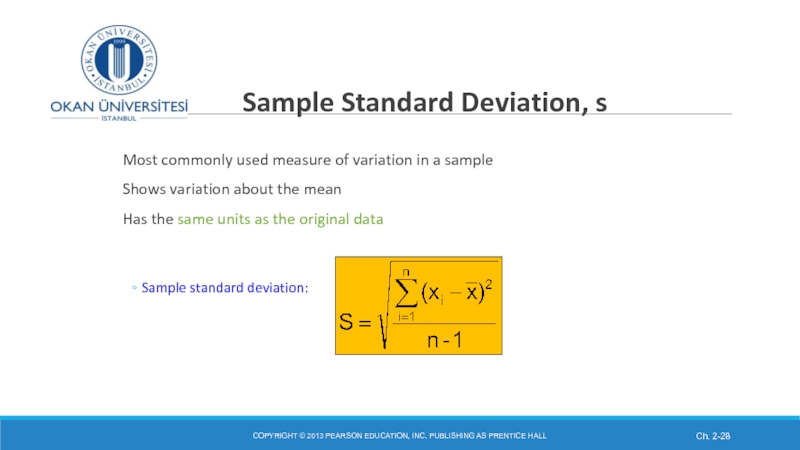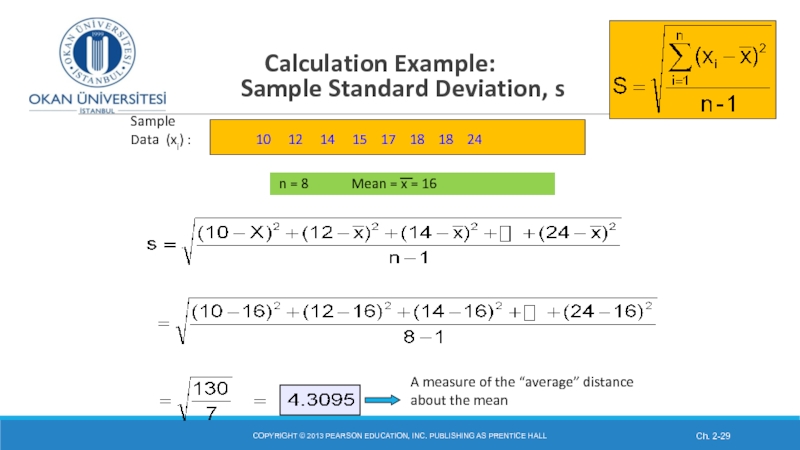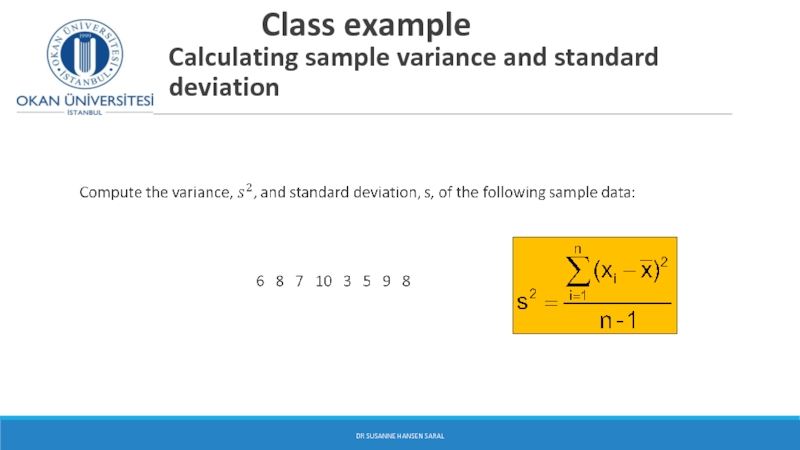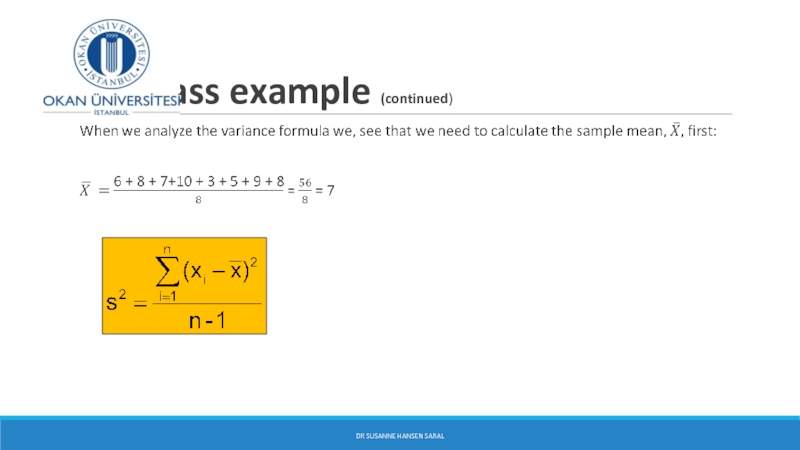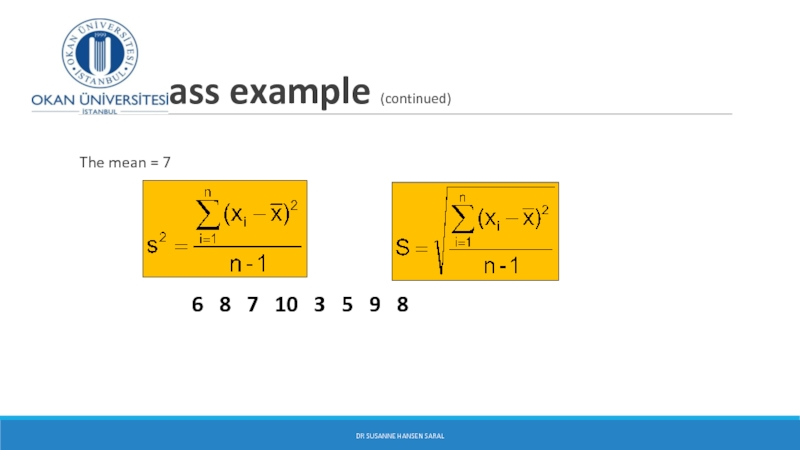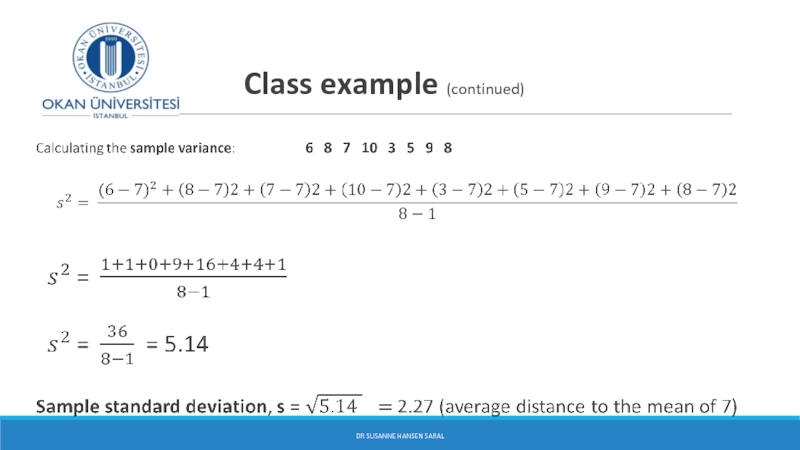- Главная
- Разное
- Дизайн
- Бизнес и предпринимательство
- Аналитика
- Образование
- Развлечения
- Красота и здоровье
- Финансы
- Государство
- Путешествия
- Спорт
- Недвижимость
- Армия
- Графика
- Культурология
- Еда и кулинария
- Лингвистика
- Английский язык
- Астрономия
- Алгебра
- Биология
- География
- Детские презентации
- Информатика
- История
- Литература
- Маркетинг
- Математика
- Медицина
- Менеджмент
- Музыка
- МХК
- Немецкий язык
- ОБЖ
- Обществознание
- Окружающий мир
- Педагогика
- Русский язык
- Технология
- Физика
- Философия
- Химия
- Шаблоны, картинки для презентаций
- Экология
- Экономика
- Юриспруденция
Measures of variation. Week 4 (1) презентация
Содержание
- 1. Measures of variation. Week 4 (1)
- 2. Numerical measures to
- 3. Interquatile range, IQR Alternative
- 5. Five-Number Summary of a data set
- 6. Five-Number Summary: Example
- 9. Five number summary and Boxplots Boxplot
- 10. Five number summary and Boxplots Boxplot is
- 11. Five number summary and boxplot
- 12. Five number summary and boxplot
- 13. Boxplot COPYRIGHT
- 14. Gilotti’s Pizza Sales in $100s
- 15. Gilotti’s Pizza Sales What are
- 16. Gilotti’s Pizza Sales - boxplot
- 17. Gilotti’s Pizza Sales in $100s
- 18. Measuring variation in a data set
- 19. Measuring variation in a data set
- 20. Average distance to
- 21. Calculating the average distance to the mean 2/22/2017
- 22. Calculating the average distance to the mean 2/22/2017
- 23. Calculating the average distance to the
- 24. Calculating the average distance to the
- 25. Average of squared deviations from the
- 26. Average of squared deviations from the
- 27. Most commonly used measure of variation
- 28. Sample Standard Deviation,
- 29. Calculation Example: Sample Standard Deviation,
- 30. Class example Calculating sample variance and standard deviation DR SUSANNE HANSEN SARAL
- 31. Class example (continued) DR SUSANNE HANSEN SARAL
- 32. Class example (continued) The mean
- 33. C Class example (continued) DR SUSANNE HANSEN SARAL
Слайд 1BBA182 Applied Statistics
Week 4 (1)Measures of variation
DR SUSANNE HANSEN SARAL
EMAIL: SUSANNE.SARAL@OKAN.EDU.TR
HTTPS://PIAZZA.COM/CLASS/IXRJ5MMOX1U2T8?CID=4#
WWW.KHANACADEMY.ORG
DR
Слайд 2 Numerical measures to describe data
COPYRIGHT © 2013 PEARSON EDUCATION, INC. PUBLISHING AS PRENTICE HALL
Ch. 2-
Mean
Median
Mode
Describing Data Numerically
Variance
Standard Deviation
Coefficient of Variation
Range
Interquartile Range
Central Tendency
Variation
Quartile
Слайд 5
Five-Number Summary of a data set
DR SUSANNE HANSEN SARAL
In describing numerical
minimum value
first quartile
median
third quartile
maximum value
minimum < Q1 < median < Q3 < maximum
It gives us a good idea where the data is located and how it is spread in the data set
Слайд 6 Five-Number Summary: Example
DR
minimum < Q1 < median < Q3 < maximum
6 < 7.75 < 10.5 < 12.25 < 14
Sample Ranked Data: 6 7 8 9 10 11 11 12 13 14
Слайд 7
Consider the data given below:
110 125 99 115 119 95 110 132 85
a. Compute the mean.
b. Compute the median.
c. What is the mode?
d. What is the shape of the distribution?
e. What is the lower quartile, Q1?
f. What is the upper quartile, Q3?
g. Indicate the five number summary
Слайд 8
Consider the data given below.
85 95 99 110 110 115 119 125 132
a. Compute the mean. 110
b. Compute the median. 110
c. What is the mode? 110
d. What is the shape of the distribution? Symmetric, because mean = median=mode
e. What is the lower quartile, Q1? 97
f. What is the upper quartile, Q3? 122
g. Indicate the five number summary 85 < 97 < 110 < 122 < 132
Слайд 9 Five number summary and Boxplots
Boxplot is created from the five-number summary
A
It visualizes the spread of the data in the data set.
COPYRIGHT © 2013 PEARSON EDUCATION, INC. PUBLISHING AS PRENTICE HALL
Ch. 2-
Слайд 10 Five number summary and Boxplots
Boxplot is created from the five-number summary
The
Two lines extend from the box. One line is the line from Q1 to the minimum value, the other is the line from Q3 to the maximum value
A boxplot is a graph for numerical data that describes the shape of a distribution, like the histogram
COPYRIGHT © 2013 PEARSON EDUCATION, INC. PUBLISHING AS PRENTICE HALL
Ch. 2-
Слайд 13 Boxplot
COPYRIGHT © 2013 PEARSON EDUCATION, INC. PUBLISHING
Ch. 2-
Median
(Q2)
maximum
minimum
Q1
Q3
Example:
25% 25% 25% 25%
12 30 45 57 70
The plot can be oriented horizontally or vertically
Слайд 18 Measuring variation in a data set that follows
COPYRIGHT © 2013 PEARSON EDUCATION, INC. PUBLISHING AS PRENTICE HALL
Ch. 2-
Small spread/variation
Large spread/variation
Слайд 19 Measuring variation in a data set
Data set 1 : 23
Data set 2 : 23 35 19 7 21 24 22 Mean: 21.6
Which of these two data sets has the highest spread/variation? Why?
COPYRIGHT © 2013 PEARSON EDUCATION, INC. PUBLISHING AS PRENTICE HALL
Ch. 2-
Слайд 20 Average distance to the mean:
Most commonly used measure of variability
Measures the standard (average) distance of each individual data point from the mean.
2/22/2017
Слайд 23 Calculating the average distance to the mean
Notice that the deviation
This is not surprising because the mean serves as balance point (middle point) for the distribution. (!Remember: In a symmetric distribution the mean and the median are identical)
The distances of the single score above the mean equal the distances of the single scores below the mean.
Therefore the deviation score always adds up to zero.
2/22/2017
Слайд 24 Calculating the average distance to the mean
Step 3: The
2/22/2017
Слайд 25
Average of squared deviations from the mean
Population variance:
COPYRIGHT © 2013 PEARSON
Ch. 2-
Where:
= population mean
N = population size
xi = ith value of the variable x
Слайд 26
Average of squared deviations from the mean
Sample variance:
COPYRIGHT © 2013 PEARSON
Ch. 2-
Where:
= arithmetic mean
n = sample size
Xi = ith value of the variable X
Слайд 27
Most commonly used measure of variation in a population
Shows variation
Has the same units as the original data,
Example: If original data is in meters than the standard deviation will also be in meters.
Population standard deviation:
COPYRIGHT © 2013 PEARSON EDUCATION, INC. PUBLISHING AS PRENTICE HALL
Ch. 2-
Слайд 28 Sample Standard Deviation, s
Most commonly used measure
Shows variation about the mean
Has the same units as the original data
Sample standard deviation:
COPYRIGHT © 2013 PEARSON EDUCATION, INC. PUBLISHING AS PRENTICE HALL
Ch. 2-
Слайд 29 Calculation Example:
Sample Standard Deviation, s
COPYRIGHT © 2013 PEARSON EDUCATION,
Ch. 2-
Sample
Data (xi) : 10 12 14 15 17 18 18 24
n = 8 Mean = x = 16
A measure of the “average” distance about the mean
